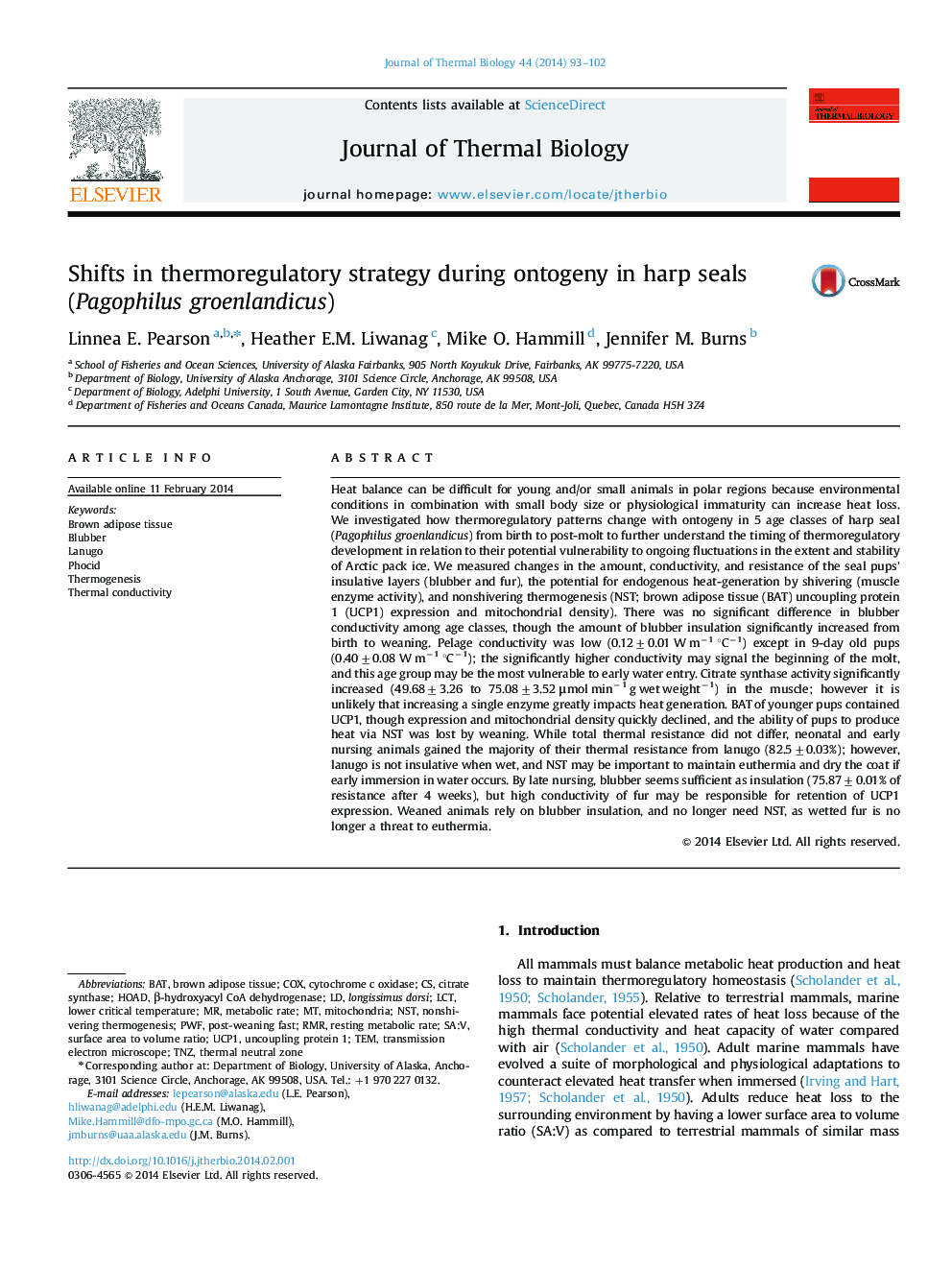| کد مقاله | کد نشریه | سال انتشار | مقاله انگلیسی | نسخه تمام متن |
|---|---|---|---|---|
| 2842913 | 1571101 | 2014 | 10 صفحه PDF | دانلود رایگان |

• Nursing harp seals are capable of nonshivering thermogenesis in brown adipose tissue.
• There were no changes in harp seal pup blubber conductivity during ontogeny.
• Proportion of thermal resistance shifts from lanugo to blubber with ontogeny.
• UCP1 expression declines as the proportion of blubber insulation increases.
Heat balance can be difficult for young and/or small animals in polar regions because environmental conditions in combination with small body size or physiological immaturity can increase heat loss. We investigated how thermoregulatory patterns change with ontogeny in 5 age classes of harp seal (Pagophilus groenlandicus) from birth to post-molt to further understand the timing of thermoregulatory development in relation to their potential vulnerability to ongoing fluctuations in the extent and stability of Arctic pack ice. We measured changes in the amount, conductivity, and resistance of the seal pups׳ insulative layers (blubber and fur), the potential for endogenous heat-generation by shivering (muscle enzyme activity), and nonshivering thermogenesis (NST; brown adipose tissue (BAT) uncoupling protein 1 (UCP1) expression and mitochondrial density). There was no significant difference in blubber conductivity among age classes, though the amount of blubber insulation significantly increased from birth to weaning. Pelage conductivity was low (0.12±0.01 W m−1 °C−1) except in 9-day old pups (0.40±0.08 W m−1 °C−1); the significantly higher conductivity may signal the beginning of the molt, and this age group may be the most vulnerable to early water entry. Citrate synthase activity significantly increased (49.68±3.26 to 75.08±3.52 μmol min−1 g wet weight−1) in the muscle; however it is unlikely that increasing a single enzyme greatly impacts heat generation. BAT of younger pups contained UCP1, though expression and mitochondrial density quickly declined, and the ability of pups to produce heat via NST was lost by weaning. While total thermal resistance did not differ, neonatal and early nursing animals gained the majority of their thermal resistance from lanugo (82.5±0.03%); however, lanugo is not insulative when wet, and NST may be important to maintain euthermia and dry the coat if early immersion in water occurs. By late nursing, blubber seems sufficient as insulation (75.87±0.01% of resistance after 4 weeks), but high conductivity of fur may be responsible for retention of UCP1 expression. Weaned animals rely on blubber insulation, and no longer need NST, as wetted fur is no longer a threat to euthermia.
Journal: Journal of Thermal Biology - Volume 44, August 2014, Pages 93–102